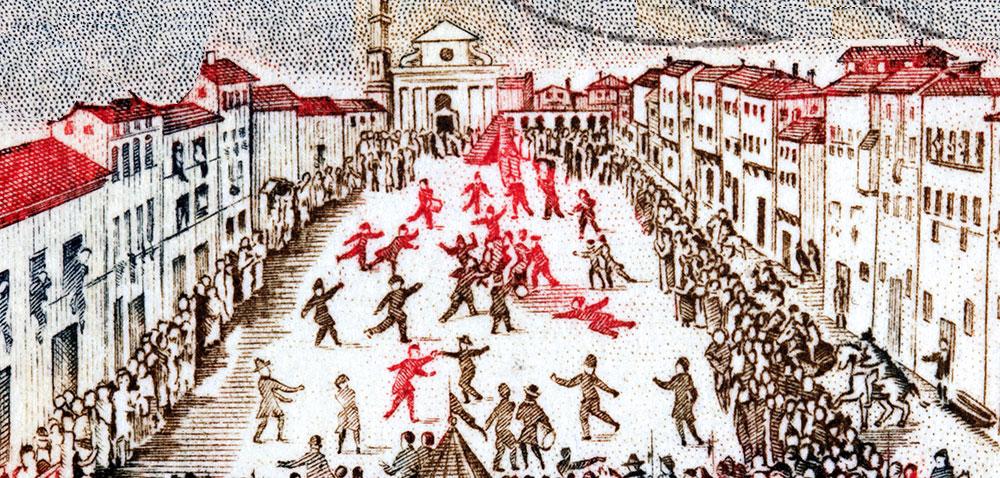The origins of Italy’s passion for football

Whether you call it football, or soccer, one thing’s certain; it’s not just an Italian passion, the Italians also had a hand in making it the popular game it is today.
Ancient versions of similar ball games existed around the world, perhaps the oldest being in Asia. In China, a game called cuju saw men playing on a field, kicking a leather ball filled with feathers and women’s hair. The goal was to kick the ball into a hole in a silk cloth, suspended between two bamboo poles.
A few hundred years before the birth of Christ, the Greeks had a game called episkyros, which involved passing a ball by hand, which in time was adapted by the Romans into a game called harpustum. Both of which could get quite violent, making success a matter of masculine pride for players (some things never change). The violent side of the game continued as it was adopted in England and played in local parks by enthusiastic youths – leading to a ban in many towns.
Of course, the renaissance Italians knew how to add some class to football. In 16th Century Florence, the period between epiphany and lent would be celebrated in the Piazza Santa Croce with a game known as calcio storico – historic kickball.
Rather than being played by young ruffians, it was the city’s aristocrats that took part, donning fine silk clothing to play. With 27 on each team, the game was an adaptation of a military training exercise, and despite having set rules which players followed, still featured plenty of punching, shoulder charging and kicking – of opponents as much as the ball.
It was a world away from the game of football we know today. But if you fancy a taste of the action, you can catch a recreation of a game of calcio storico in Florence every June.
Ancient versions of similar ball games existed around the world, perhaps the oldest being in Asia. In China, a game called cuju saw men playing on a field, kicking a leather ball filled with feathers and women’s hair. The goal was to kick the ball into a hole in a silk cloth, suspended between two bamboo poles.
A few hundred years before the birth of Christ, the Greeks had a game called episkyros, which involved passing a ball by hand, which in time was adapted by the Romans into a game called harpustum. Both of which could get quite violent, making success a matter of masculine pride for players (some things never change). The violent side of the game continued as it was adopted in England and played in local parks by enthusiastic youths – leading to a ban in many towns.
Of course, the renaissance Italians knew how to add some class to football. In 16th Century Florence, the period between epiphany and lent would be celebrated in the Piazza Santa Croce with a game known as calcio storico – historic kickball.
Rather than being played by young ruffians, it was the city’s aristocrats that took part, donning fine silk clothing to play. With 27 on each team, the game was an adaptation of a military training exercise, and despite having set rules which players followed, still featured plenty of punching, shoulder charging and kicking – of opponents as much as the ball.
It was a world away from the game of football we know today. But if you fancy a taste of the action, you can catch a recreation of a game of calcio storico in Florence every June.
